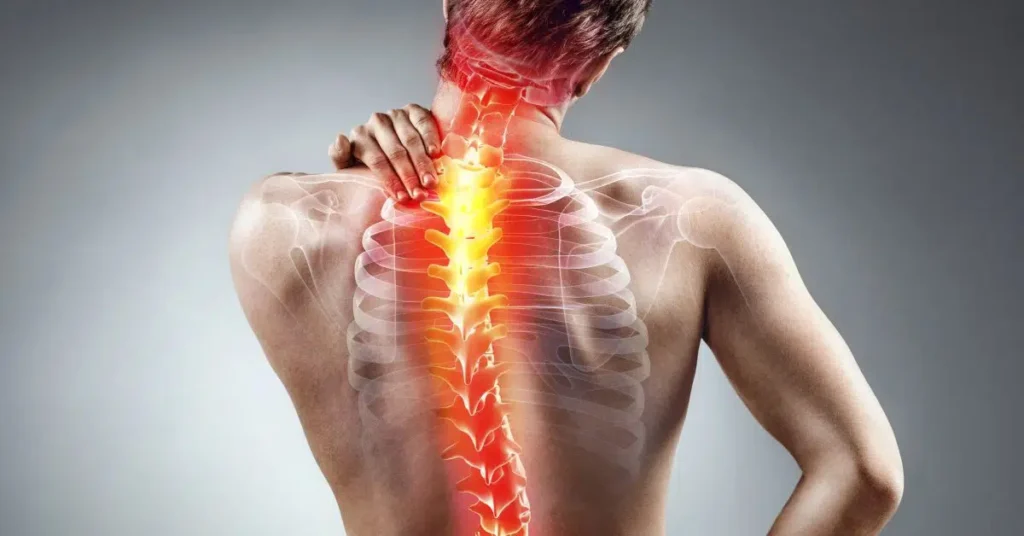Understanding advispain: Causes, Types, and Symptoms
Common Causes of advispain
Back pain can stem from many reasons. Poor posture, like slouching at your desk or sleeping in an awkward position, often leads to muscle strain. A sudden injury from lifting something heavy or twisting wrong can cause immediate pain. Herniated discs—when the soft cushion between your spine bones slips out—are also common culprits. Aging can degeneratively wear down spinal discs and joints, causing discomfort. Lifestyle factors such as being overweight or spending too much time sitting can make back pain worse. Sedentary habits weaken muscles that support your spine, increasing the risk of pain and injury.
Types of advispain
Back pain isn’t all the same. It falls into two main categories: acute and chronic. Acute back pain lasts for a short time—usually a few days to weeks—and often heals on its own. Chronic back pain persists for more than three months, sometimes even years. Understanding this difference helps determine the right treatment.
Back pain also occurs in different areas:
- Lumbar pain affects the lower back, the most common site.
- Thoracic pain hits the middle back, less frequent but often linked to rib or organ issues.
- Cervical pain is pain in the neck area, which can cause headaches or arm tingling.
Recognizing Symptoms and When to Seek Help
Some telltale signs include sharp pain, stiffness, or a sinking feeling in your back. You might also feel numbness, tingling, weakness, or a burning sensation. If pain worsens when you move or stay still, it’s time to consult a doctor. Watch for signs like loss of bladder or bowel control, severe weakness, or pain spreading down your legs. These symptoms may point to nerve problems or more severe conditions that need urgent care.
Effective Diagnosing of advispain: Tests and Assessments
Physical Examination Methods
Doctors start with simple tests. They check your range of motion while watching how you move. Palpation involves gently pressing around your back to find tender spots. They might also test your reflexes and muscle strength to see if nerves are irritated or damaged.
Diagnostic Imaging and Tests
If pain lingers or worsens, imaging tests come next. X-rays reveal bones and joint issues, while MRIs give detailed pictures of soft tissues like discs and nerves. CT scans might be used for complex cases. Usually, imaging isn’t necessary for short-term pain unless there’s suspicion of fracture or nerve compression.
Importance of Accurate Diagnosis
Getting the right diagnosis is key. It ensures you get targeted treatment, speeding up relief. Sometimes, what you think is just a pulled muscle could be a herniated disc or other serious condition. Accurate diagnosis avoids unnecessary treatments and helps plan the best course of action.
Treatment Options for advispain
Conservative Approaches
Physical Therapy
A trained physical therapist can help you with exercises tailored to your needs. Stretching and strengthening muscles improve spinal support. Good posture and body mechanics learned during therapy help prevent recurrence.
Medications
Over-the-counter painkillers like NSAIDs (ibuprofen or naproxen) can reduce inflammation. Muscle relaxants might help with tight muscles. Always follow your doctor’s advice on medication use to avoid side effects.
Lifestyle Modifications
Adjust your workspace to be ergonomic—use a comfortable chair, keep your feet flat, and maintain good posture. Managing your weight through healthy eating and regular activity reduces stress on your lower back. Pacing yourself and avoiding sudden movements can prevent further injury.
Interventional Procedures
Injections
For more severe pain, doctors may recommend epidural steroid injections or nerve blocks. These target inflammation around nerves and reduce pain, allowing you to move better.
Surgery
Surgery is usually a last resort. It’s considered when other treatments fail or if there’s nerve damage. Procedures like discectomy remove herniated discs, while spinal fusion stabilizes your spine. Recovery varies depending on the surgery, but many patients return to normal activity afterward.
Alternative Treatments
Options like chiropractic adjustments, acupuncture, and massage therapy can offer relief. While some evidence supports their use, it’s best to work with qualified practitioners. These treatments can complement conventional medicine and help manage pain naturally.
Preventive Strategies and Lifestyle Changes
Posture and Ergonomics
Good posture prevents undue stress on your spine. Sit with your back straight, shoulders relaxed, and feet flat on the ground. When lifting objects, bend your knees and keep objects close to your body. Adjust your workspace with supportive chairs, proper monitor height, and ergonomic keyboards.
Regular Exercise and Physical Activity
Engage in routine activities that strengthen your core—abdomen, hips, and lower back muscles. Exercises like walking, swimming, or yoga improve flexibility and muscle balance. Incorporate stretching to keep your muscles supple and avoid stiffness.
Maintaining a Healthy Weight
Being overweight increases stress on your back, especially in the lower region. Eating balanced meals and staying active helps keep your weight in check. Even a small loss can significantly lessen back pain.
Stress Management and Psychological Well-being
Stress tightens muscles and amplifies pain sensations. Practices like deep breathing, meditation, or mindfulness reduce tension. When your mind feels calmer, your body responds better, decreasing back pain episodes.
Expert Insights and Real-World Case Studies
Orthopedic specialists agree early diagnosis and proper treatment prevent long-term issues. For example, a patient with herniated disc who started physical therapy promptly recovered faster. In another case, a woman managing her weight and practicing good posture avoided surgery altogether. New research shows that combining physical therapy with mindfulness techniques improves pain control and quality of life.
Conclusion
Managing advispain involves understanding its causes, getting accurate diagnosis, and choosing the right treatment plan. Prevention through good posture, regular exercise, and weight management plays a vital role. Remember, don’t ignore persistent pain—professional help can make a difference. With the right approach, you can live pain-free and stay active longer. Take control today for a healthier, happier back tomorrow.

